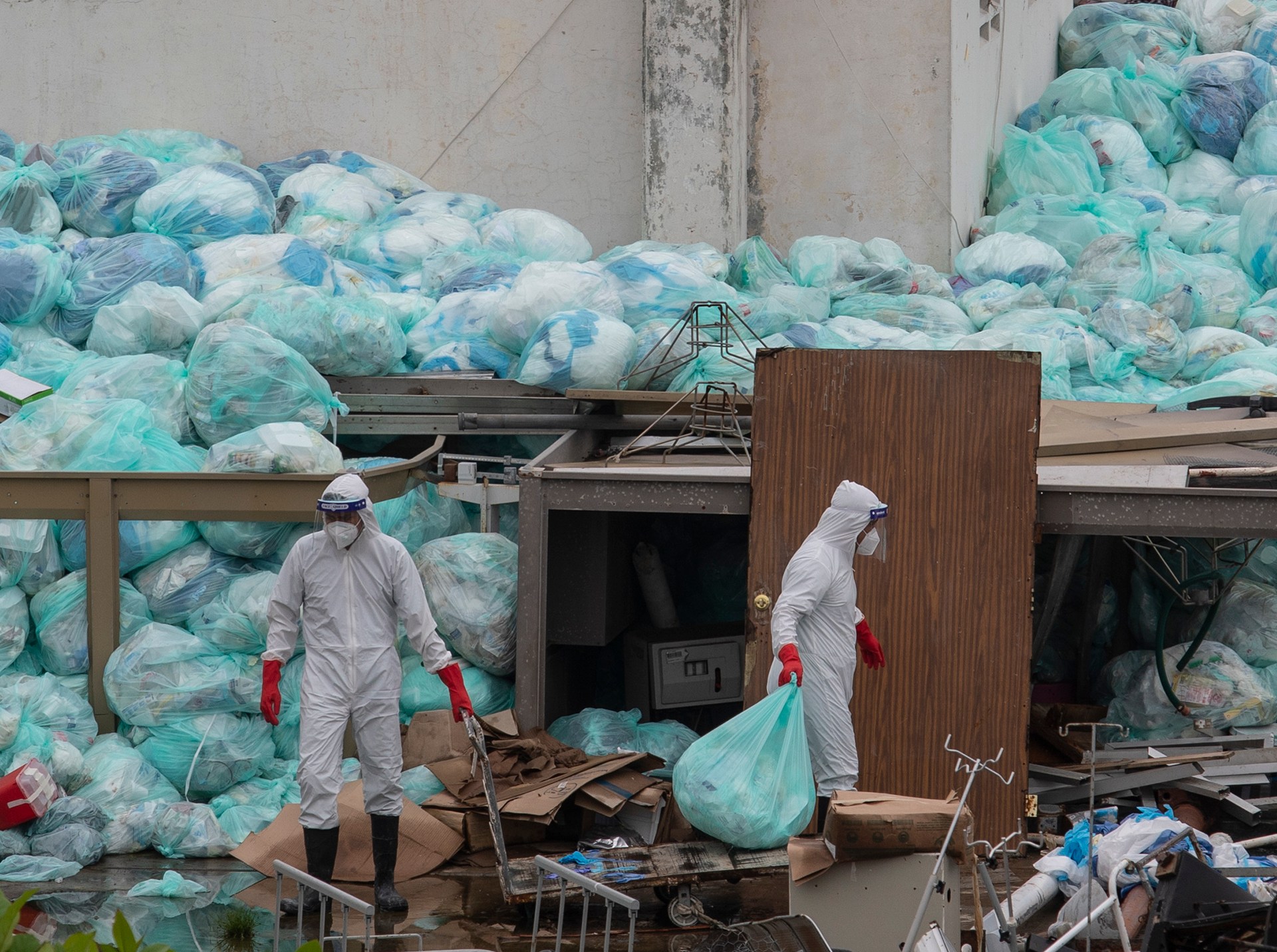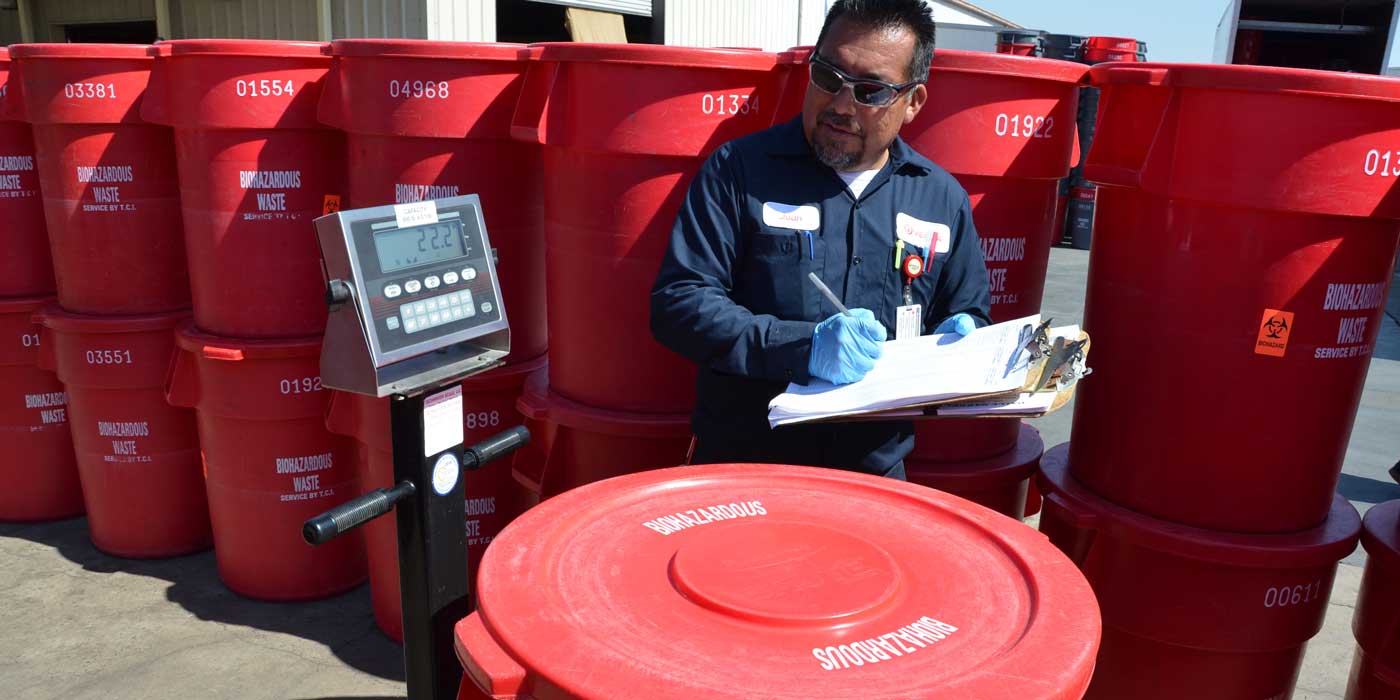Ecological Obligation: The Eco-Friendly Strategy to Medical Waste Disposal
Ecological Obligation: The Eco-Friendly Strategy to Medical Waste Disposal
Blog Article
Discovering Various Garbage Disposal Options for a Cleaner Setting
In the pursuit of a cleaner atmosphere, the monitoring of waste disposal has actually emerged as a vital focal factor for lasting development. With a wide variety of waste disposal choices offered, varying from standard landfill techniques to ingenious waste-to-energy technologies, the selection of just how we handle our waste has significant effects for our earth's health.
Recycling Methods
Applying reliable recycling techniques is vital in minimizing waste and advertising sustainability in our setting. Reusing entails the process of transforming waste products into reusable things to prevent unneeded disposal.
One more important recycling approach is composting, which entails decomposing natural waste like food scraps and lawn trimmings right into nutrient-rich dirt. By including these different recycling techniques right into our waste monitoring techniques, we can dramatically minimize our environmental impact and move in the direction of a much more sustainable future.

Composting Strategies
Reliable waste management practices, such as reusing methods, lead the way for a cleaner environment, and currently, shifting the focus to 'Composting Techniques', we check out sustainable ways to break down natural waste for ecological benefit. medical waste removal near me.
Composting is a natural process that transforms organic waste, like food scraps and backyard trimmings, right into a nutrient-rich soil change. The trick to successful composting hinges on creating the best equilibrium of eco-friendly materials, such as fruit and vegetable scraps, and brown materials, like dried branches and leaves. These materials disintegrate with the assistance of microorganisms, breaking down the waste right into beneficial garden compost.
Traditional yard composting entails layering natural products in a bin or heap and routinely transforming the mixture to freshen it. By utilizing composting techniques, we can lower the quantity of waste sent out to land fills while producing a beneficial product for enhancing dirt and supporting plant growth.
Incineration Disadvantages and pros
Incineration, as a waste disposal approach, presents both advantages and negative aspects that merit mindful factor to consider in the world of sustainable waste administration techniques. On the favorable side, incineration can dramatically decrease the volume of waste, lessening the demand for garbage dump area and potentially lowering greenhouse gas discharges. Incineration additionally enables for the healing of power with the generation of electricity or warmth, adding to resource recuperation. Additionally, the process can be used to damage dangerous substances, offering a safe approach for managing certain types of waste that might pose risks to public health and the atmosphere if left without treatment.
Nonetheless, there are noteworthy disadvantages to incineration. One significant problem is the prospective launch of hazardous contaminants right into the air, such company website as dioxins, heavy metals, and particle matter, which can have unfavorable results on human wellness and the setting. Additionally, the high initial investment and operational expenses of incineration centers pose economic difficulties, making it a less affordable alternative contrasted to other waste management approaches. Cautious tracking and policy are vital to alleviate these adverse effects and take full advantage of the benefits of incineration as component of a detailed waste management approach.
Land Fill Administration Strategies
Garbage dumps play a critical role in waste monitoring and environmental preservation by supplying a containment system for the disposal of solid waste materials. By condensing the waste, the volume is reduced, permitting for more waste to be accommodated over time.
Furthermore, the application of everyday cover practices is essential in lessening odors, preventing clutter, and decreasing the attraction of pests. Covering the disposed waste at the end of daily assists to include smells and prevent prospective environmental contamination. Additionally, the surveillance of landfill gas emissions and leachate degrees is important in guaranteeing that environmental criteria are fulfilled which any potential risks to bordering communities are minimized.

Waste-to-Energy Technologies
Among the ingenious strategies to waste administration involves harnessing Waste-to-Energy innovations to convert solid waste into useful power resources. Waste-to-Energy (WtE) modern technologies incorporate a variety of procedures that aim to draw out energy from waste materials with thermal, chemical, or biological means. This conversion process not only decreases the volume of waste that winds up in land fills yet additionally produces beneficial power sources such as electrical energy, heat, or biofuels.
There are numerous approaches of Waste-to-Energy conversion, including pyrolysis, incineration, and gasification. Incineration involves shedding waste at high temperatures to produce warmth and electrical power. Gasification converts waste into a syngas, which can be utilized for power generation or chemical production. Pyrolysis breaks down organic materials making use of heats in the absence of oxygen, producing gas, bio-oil, and char.
Implementing Waste-to-Energy innovations can aid minimize ecological problems connected with standard garbage disposal methods while at the same time giving a renewable resource resource. Nevertheless, careful consideration should be offered to emissions control and making sure the sustainability of feedstock supplies for these innovations to be genuinely beneficial for a cleaner atmosphere.

Final Thought
Finally, discovering various waste disposal options such as reusing, composting, incineration, landfill monitoring, and waste-to-energy innovations is necessary for advertising a cleaner environment - click here. Each technique has its own benefits and obstacles, but by using a mix of these methods, we can work towards lowering the quantity of waste that finishes up in garbage dumps and inevitably add to an extra lasting future for generations to find
With a plethora of waste disposal alternatives readily available, varying from standard land fill techniques to ingenious waste-to-energy technologies, the option of exactly how we manage our waste has far-reaching effects for our world's wellness. medical waste removal service.Incineration, as a waste disposal method, presents both advantages and negative aspects that merit mindful factor to consider in the realm of sustainable waste management techniques.Land fills play a crucial duty in waste management and ecological conservation by providing a containment system for the disposal of strong waste materials. By condensing the waste, the quantity is minimized, permitting for more waste to be fit over time
One of the cutting-edge approaches to lose monitoring involves using Waste-to-Energy technologies to transform solid waste into useful energy sources.
Report this page